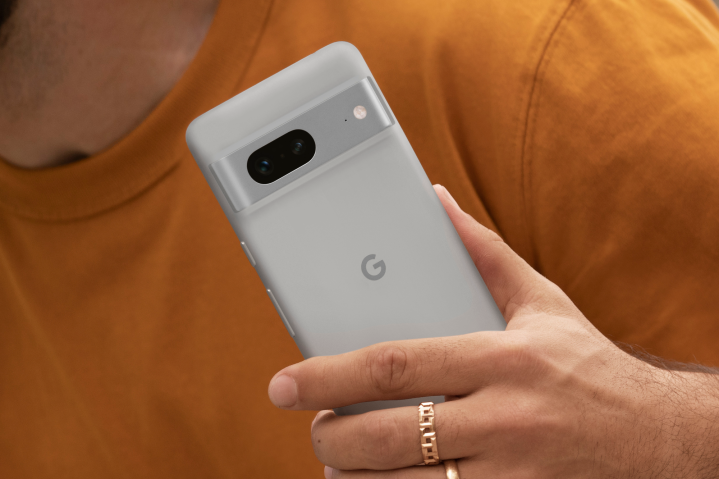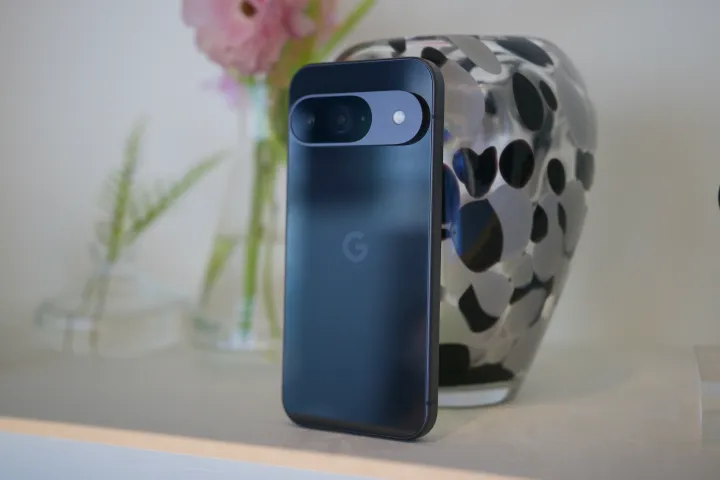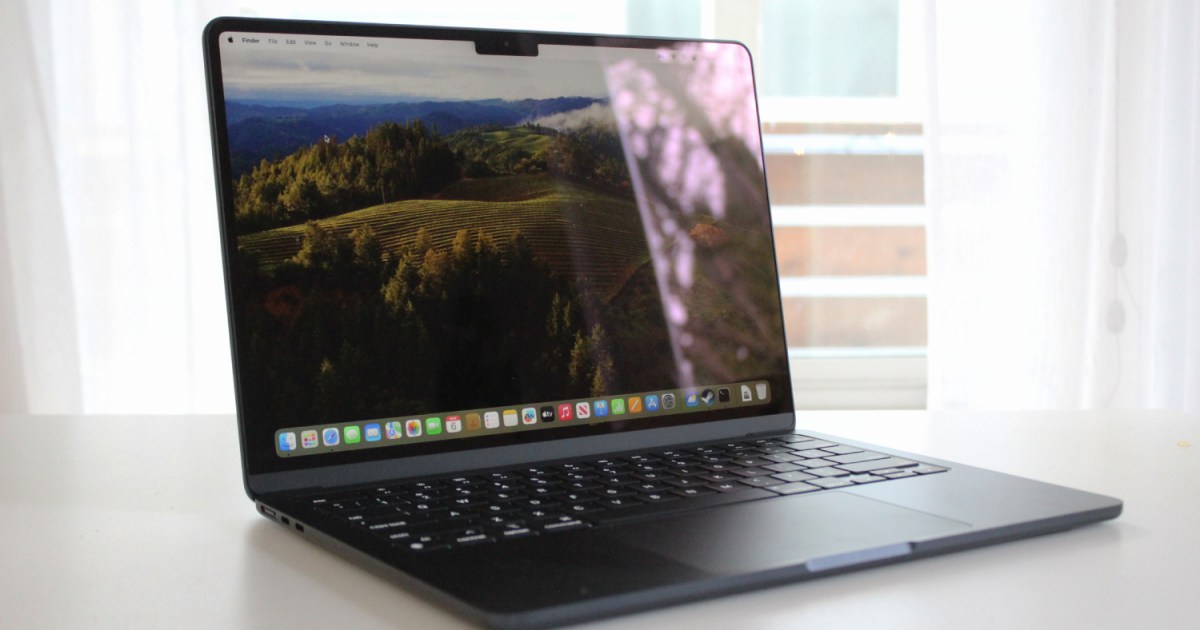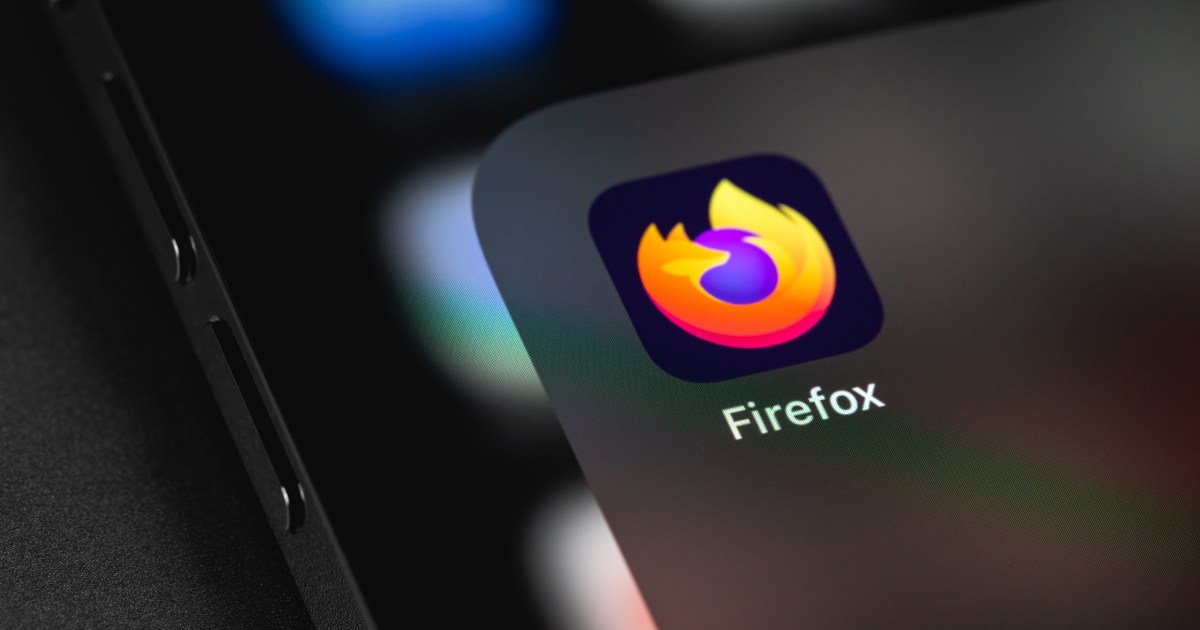Editor’s note: Even though the Pixel 9 was already at a reasonable starting price, there are some Black Friday deals that are making it sweeter than ever to get a Pixel 9. For Black Friday, you can find the 128GB Pixel 9 for just $647 at Amazon, Best Buy, and directly from Google. This is over $150 off the normal $799 price, and considering that the Pixel 7, which is no longer being sold, started at $599, this is an outstanding deal.
Of course, if you want to spend as little as possible, there are still some Pixel 7 devices being sold as refurbished on Amazon. These appear to be going for around $231, so you could save some more money if you don’t mind a refurbished device. But keep in mind that the Pixel 7 is already two years old at this point, so it will reach its end of life sooner than the Pixel 9. If you’re holding onto a Pixel 7 still and looking to upgrade, there’s never been a better time to jump on the Google Pixel 9.
For the second consecutive year, Google has raised the asking price of its entry-point mainline Pixel phone. When the Google Pixel 7 hit the shelves two years ago, the biggest allure was its sticker price, which undercut flagship phones from both Apple and Samsung. But with the Google Pixel 9 this year, that advantage is gone.
The latest Google phone starts at $799. This puts it in the same league as the Apple iPhone 15 and the Samsung Galaxy S24. The steep $200 price bump, however, comes with a handful of perks that cover almost every major aspect of the phone.
As always, the pertinent question is whether one should stick with the trusty ol’ Pixel 7, or pay up and get the Pixel 9 with all its AI bells and whistles. We compared both phones based on test-driven experiences in the hands of experts to help you make the right choice.
Google Pixel 9 vs. Google Pixel 7: specs
| Google Pixel 9 | Google Pixel 7 | |
| Size | 152.8 x 72.0 x 8.5 mm |
155.6 x 73.2 x 8.7 mm |
| Weight | 198 grams | 197 grams |
| Colors | Obsidian
Porcelain Wintergreen Peony |
Obsidian
Snow Lemongrass |
| Price | Starts at $799 | Starts at $599 |
| Display | 6.3-inch Actua OLED
1080 x 2424 pixels 60-120Hz refresh rate 422 PPI pixel density Up to 2,700 nits peak Corning Gorilla Glass Victus 2 protection |
6.3-inch OLED
1080 x 2400 pixels 90Hz peak refresh rate 416 PPI pixel density Up to 1,400 nits peak Corning Gorilla Glass Victus protection |
| Chipset | Google Tensor G4 Titan M2 security coprocessor |
Google Tensor G2 |
| RAM | 12GB | 8GB |
| Storage | 128GB
256GB |
128GB
256GB |
| Rear cameras | Primary Camera 50 MP Octa PD wide camera f/1.68 aperture 82° field of view 1/1.31″ image sensor size Super Res Zoom up to 8x OIS and EISUltrawide Camera 48 MP Quad PD ultrawide camera with autofocus f/1.7 aperture 123° field of view 1/2.55″ image sensor size |
Primary Camera 50 MP Octa PD wide camera f/1.85 aperture 82° field of view 1/1.31″ image sensor size 1.2 μm pixel width Super Res Zoom up to 8x OIS and EISUltrawide Camera 12 MP ultrawide camera f/2.2 aperture 114° field of view 1.25 μm pixel width |
| Camera features | Super Res Zoom up to 8x Add Me Macro Focus Night Sight Astrophotography Portrait Mode Face Unblur Long Exposure Action Pan Real Tone Panorama Top Shot Frequent FacesEditing Features Magic Editor Magic Eraser Best Take Photo Unblur Portrait Light |
Photo Unblur Night Sight Top Shot Portrait mode Super Res Zoom Motion auto-focus Live HDR+ Frequent Faces Dual exposure controls Cinematic Pan Portrait Light Magic Eraser Long Exposure Real ToneEditing features Face Unblur Panorama Manual white balancing Locked Folder Magic Editor Astrophotography |
| Video capabilities | 4K video recording at 24/30/60 FPS 1080p video recording at 24/30/60 FPS Dual exposure on wide camera Digital video zoom up to 7x Macro Focus Video 10-bit HDR video Cinematic Blur Cinematic Pan Slo-mo video support up to 240 FPS 4K timelapse with stabilization Astrophotography timelapse Night Sight timelapse |
4K video recording at 30/60 FPS 1080p video recording at 30/60 FPS 10-bit HDR video Slo-mo video support up to 240 FPS 4K timelapse with stabilization Astrophotography timelapse Optical image stabilization Fused video stabilization 4K Cinematic Pan video stabilization 4K Locked video stabilization 1080p Active video stabilization Digital zoom up to 7 |
| Selfie cameras | 10.5 MP Dual PD selfie camera with autofocus f/2.2 aperture 95° ultrawide field of view |
10.8 MP Dual PD selfie camera f/2.2 aperture 92.8° Ultrawide field of view 1.22 μm pixel width |
| 4,700 mAh | 4,355 mAh | |
| Charging | 45W wired fast charging Qi wireless charging Reverse wireless charging |
21W wired fast charging Qi wireless charging Reverse wireless charging |
| Water resistance | IP68 | IP68 |
| Connectivity | 5G, LTE, Wi-Fi 7, Bluetooth v5.3, NFC | 5G, LTE, Wi-Fi 6E, Bluetooth v5.2 |
Google Pixel 9 vs. Google Pixel 7: design and build
 Joe Maring / Digital Trends
Joe Maring / Digital TrendsLet’s start with the aesthetics and durability. It’s your typical Pixel affair. Both the phones have a metal frame, but the Pixel 9 has a satin finish to it on top. More importantly, Google has flattened the sides to give its new phone a sharper appearance, while its predecessor with a slightly bulging look that feels more comfortable to hold. You get a glass and metal sandwich look. But there are a few crucial differences here, even though both the phones feel equally premium in hands.
We’ve found the Pixel 9 to be the most attractive and well-presented standard Pixel phone yet, while also being one of the best-looking smartphones you can buy today. The new Google phone gets both the aesthetics and ergonomics right, which makes it glorious in a way Pixel phones haven’t always been before. The Pixel 7 got the ergonomics right, but the aesthetics were missing.
 Andrew Martonik / Digital Trends
Andrew Martonik / Digital TrendsThe Pixel 9’s satin-finish metal chassis has precisely the right amount of curve to blend in with the flat Corning Gorilla Glass Victus 2 rear panel. Google has also trimmed down the bezels by a healthy margin on the front. They are now uniform on all sides. One quick glance at the phone is enough to see how Google chased the premium looks formula and nailed it. The Pixel 9 also detaches its iconic camera island bar from the side frame and has taken a pill-shaped format. This makes the size spot on as you can use it with one hand without feeling like you’re going to fumble it.
The Pixel 9 is beautifully made without any hint of misalignment, or unwanted ridges, which can’t be said for the Pixel 7. Google has also given it a new look with the stylish camera module that as morphed from a visor on the Pixel 7 into a substantial flat-top island mountain on the back of the Pixel 9. This standout design element, and looks particularly stunning on the Wintergreen and Peony shades. But it’s not just the looks where the Pixel 9 leaves the Pixel 7 far behind, in addition to being smaller and flaunting curvier corners. At 198 grams, the Pixel 9 is suitably weighty but you won’t feel the fatigue on your wrist when using it for long durations.
 Joe Maring / Digital Trends
Joe Maring / Digital TrendsGoogle has put the second-generation Corning Gorilla Glass Victus on the front as well as the rear face of the Pixel 9, compared to the first-gen Victus shield on the Pixel 7. Corning says Victus 2 offers improved drop performance and lab tests have also proved that it can survive a fall from a one meter height on rough surfaces like concrete and up to 2 meters worth of vertical drop on asphalt.
If durability is one of your key concerns, both phones offer an IP68-rating for dust and water protection, but the surface shield on the Pixel 9 is significantly more durable. Moreover, if fresh looks also happen to be on your wishlist, the latest from Google serves that by the oodles in an emphatic fashion.
Google Pixel 9 vs. Google Pixel 7: display and performance
 Joe Maring / Digital Trends
Joe Maring / Digital TrendsAcross both generations, the display resolution is an even match at Full-HD+ and so is the pixel density. But that’s where the differences end. While the Pixel 9 doesn’t have a higher resolution display like the Pixel 9 Pro and Pixel 9 Pro XL, it supports a higher 120Hz refresh rate and is brighter and better than the Pixel 7. You get better blacks on the new Super Actua display, thanks to the company’s decision to double the contrast ratio this time around.
The Pixel 7 could only go up to 1,400 nits and reached 1,000 nits for HDR content. On the other hand, the Pixel 9’s display climbs up to 1,800 nits at HDR output while its peak brightness can touch 2,700 nits, nearly double that of the Pixel 7.
A brighter display is not only an ideal situation for watching content but it also cuts down on the reflection problem and improves content legibility even under broad daylight. This is one aspect that often goes unnoticed but makes a huge difference in day-to-day usage. However, we were able to max out the brightness setting quite often.
 Joe Maring / Digital Trends
Joe Maring / Digital TrendsAnother quality-of-life improvement comes with the better, faster, and more accurate ultrasonic fingerprint scanner. It is set sensibly high up on the screen so it’s easier and more natural for you to reach. The face unlock accompanies the biometric authentication to make the Pixel 9 the simplest, fastest, and most reliable Pixel phone security system we’ve used.
The new Pixel 9 is powered by the fourth-generation Google Tensor processor, while the Pixel 7 offers the Tensor G2. The processor is snappier, faster, and built for AI, but there is another important factor at play here. The Pixel 9 comes armed with 12GB of RAM, a big boost compared to the 8GB memory we got on the Pixel 7. While that sounds like a welcome evolution when it comes to multitasking, the RAM boost is here for AI processing.
Google Pixel 9 vs. Google Pixel 7: software
 Google
GoogleSoftware can no longer be decoupled from hardware in the context of AI tricks. Remember when Google announced that on-device Gemini Nano was coming to its smartphones, then excluded the Pixel 8 and kept the AI shenanigans limited to the Pixel 8 Pro? That was primarily because the Pixel 8 only had 8GB of RAM, which was not enough to deliver a smooth on-device AI experience. Google’s Seang Chau recently explained some of the AI features are envisioned as “RAM resident,” which means they occupy a permanent space on the RAM to deliver the best output. Technically, 8GB of RAM can handle Gemini Nano, but the experience won’t be optimal.
The Pixel 9 has 12GB of RAM, giving it more future-proofing where AI is concerned. The Pixel 7’s low RAM means it will only be able to enjoy the perks of cloud-based AI processing, which requires an internet connection at all times and won’t be as fast as local processing. The Pixel 9 features two preinstalled apps for AI: Pixel Studio and Screenshots.
The Screenshots app is like a fancy version of the screenshots folder in Google Photos but supercharged. You can search and organize your screenshots into collections and also take photos in the app itself, allowing you to add essential information to them. It declutters the Photos app/ The simple interface also encourages you to use it. On the other hand, Pixel Studio is a fun-to-have party trick, which uses AI to generate images based on your descriptions. It’s vaguely fun for a few tries but we forgot it existed for the most part when using the new phone.
Google's newest and most capable AI | Gemini
Gemini on the Pixel 9 has taken over from Assistant on the Pixel 7, which also supports Gemini. You can talk much more conversationally with it, and Gemini understands and replies in a similar fashion. However, it is currently frustratingly sparse in its functionality if you don’t pay for Gemini Live and the Gemini Advanced package, and you might like staying on the Google Assistant for basic features. No matter how much Google wants to think it is, Gemini is not a reason to buy or use the Pixel 9.
 Joe Maring / Digital Trends
Joe Maring / Digital TrendsWhen comparing both Pixels, you must note that it’s extremely likely that a healthy bunch of performance and camera-centric features that arrive with subsequent Pixel Drops will remain exclusive to the Pixel 9 because it packs the necessary resources to handle them. If you aim to push your phone for at least three to four years and don’t want to miss out on the best of what Google has to offer, the Pixel 9 is your safest bet.
The Pixel 7 arrived running Android 13 out of the box, with a promise of getting Android OS upgrades for the next three years. The Pixel 9, on the other hand, starts with Android 14 and will get Android OS updates for the next seven years, so it’ll be supported till at least 2030.
Now, that’s a massive relief in itself. But it’s also worth keeping in mind that the extra firepower underneath its shell would ensure it is capable of running next-gen Android features. The Pixel 7 will likely find itself missing out on some of the software niceties that are resource-intensive, but the Pixel 9 may not run into similar hardware-deprived situations in the immediate future. Assuming you are someone who doesn’t like to change their phone frequently but still doesn’t want to miss out on the latest and greatest software tricks that Android has to offer, the Pixel 9 would be the safer bet.
Google Pixel 9 vs. Google Pixel 7: cameras
 Andy Boxall / Digital Trends
Andy Boxall / Digital TrendsPixel smartphones have cultivated a solid reputation for their camera performance, and if you’re eyeing that luxury, the Pixel 9 won’t disappoint you. The Pixel 7 offered a combination that includes a 50-megapixel main snapper and a 12MP ultrawide angle camera.
On the Pixel 9, you get a 50MP primary camera, but the sensor has a much wider aperture to let in more light and produce more detailed shots. The biggest upgrade was reserved for the ultrawide-angle camera this year. It’s a 48MP sensor and offers a much wider aperture (f/1.7 vs f/2.2) and a wider field of view (123 degrees vs 114 degrees) than the 12MP ultrawide camera on the Pixel 7.
 Joe Maring / Digital Trends
Joe Maring / Digital TrendsA wider field of view, combined with the benefits of pixel-binning and a larger aperture, offer a guaranteed lift in the quality of images clicked by the Pixel 9’s ultrawide camera. In addition to the hardware-side upgrades, there are a handful of software-side updates, as well. In our tests, there weren’t any situations where the photo came out poorly because of something the camera had done. Both rear cameras shoot sharp, colorful images that can have a slightly processed look but they are never dull or underwhelming. They are better than the aging cameras on the Pixel 7.
To start, the Pixel 9 adds the option to record 4K and FHD videos at 60 frames per second. Another notable addition is a feature called Add Me. Think of it as a magical solution where the photographer also gets to be a part of the group picture. All you have to do is click one shot with someone as the photographer. Next, swap them in and take another. The Pixel 9’s AI will blend both pictures into a final frame where every person is a part of the shot.
 Pixel 7 Andy Boxall / Digital Trends
Pixel 7 Andy Boxall / Digital TrendsAnother neat trick is Auto Frame. Available as part of the Magic Editor suite in the Google Photos app, this feature finds frame issues and helps users correct them. In addition to automatic frame correction via angle adjustment, it can also crop or expand the view to get the best out of a picture. You can also add new elements to these pictures by simply typing the changes they seek. The query is then passed through a text-to-image pipeline, and the AI-generated assets are then added to the pictures clicked by the Pixel 9.
Google Pixel 9 vs. Google Pixel 7: battery life
 Christine Romero-Chan / Digital Trends
Christine Romero-Chan / Digital TrendsFor small-ish phones, battery juice is always in short supply. The Pixel 7’s 4,355 mAh battery was no exception. Thanks in no part to some weird idle power drain and poor resource optimization, the phone gave many some serious battery anxiety. Thankfully, Google is addressing the undesirable situation with a couple of upgrades to the Pixel 9. First, it comes armed with a bigger 4,700mAh Li-ion cell inside.
The Pixel 9’s battery life surprised us. Previous models have all suffered from average-at-best battery life, but the new Pixel goes beyond this. As noted in our review, the battery life is not stellar but it’s more than acceptable for general use. On days when you don’t play games but do use GPS, the camera, media, and apps, you can expect a total of four hours of screen time, with around 30% remaining.
 Google
GoogleSupport for wireless charging and reverse power share is part of the package. In addition to a bigger battery, Google is also addressing another pain point of Pixel phones: slow charging. The Pixel 7 could only go up to 21W in wired mode, promising a pace of empty to halfway battery top-up in roughly 30 minutes. The Pixel 9, which is sold alongside a beefier 45W brick, can charge quicker despite packing a larger battery.
Google Pixel 9 vs. Google Pixel 7: which one to pick?
 Google
GoogleThe Google Pixel 9 is hands down the better device than the Google Pixel 7. It delivers refined looks that certainly break the monotony with its signature camera bar, beautiful colorways, a brighter display, and a faster processor. But most importantly, it builds up on the Pixel brand’s two core strengths: a fantastic camera and the best software support strategy in the Android ecosystem. Moreover, thanks to the hardware lift and the software update commitment, it’s also fairly future-proof.
Of course, $200 is quite a fat hike on the sticker price, but compared to the usual set of iterative goodies you’ll come across on an iPhone or entry-point Samsung Galaxy, the ask is a lot more palatable in the Pixel’s case.
Should you pick the Pixel 9? Well, if you’re already in the market for a reliable phone with cash in your hand, you can’t go wrong with this one. If you seek to upgrade from the Pixel 7, check whether that phone is limiting you in ways that fundamentally break what one would call a fuss-free smartphone experience.
If the answer is yes, look up for whatever trade-in deal you can score and put your trust in the Pixel 9. Otherwise, the Pixel 7 should still be a fine company for at least the next couple of years with guaranteed OS upgrades and Pixel Drop feature updates.



















 English (US) ·
English (US) ·